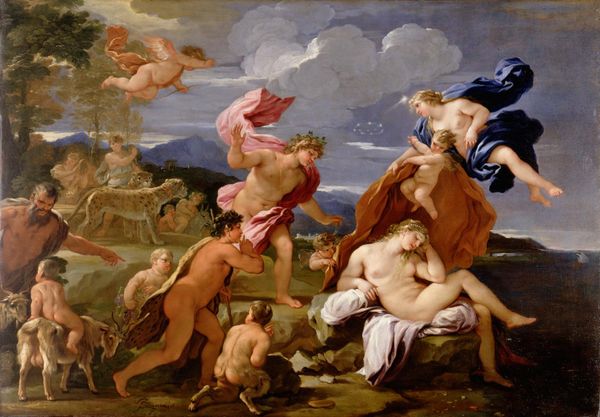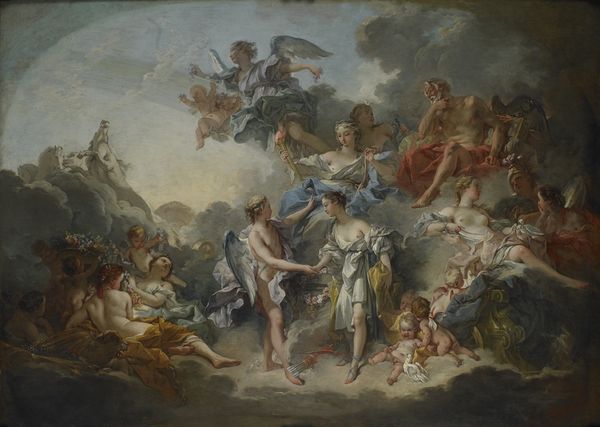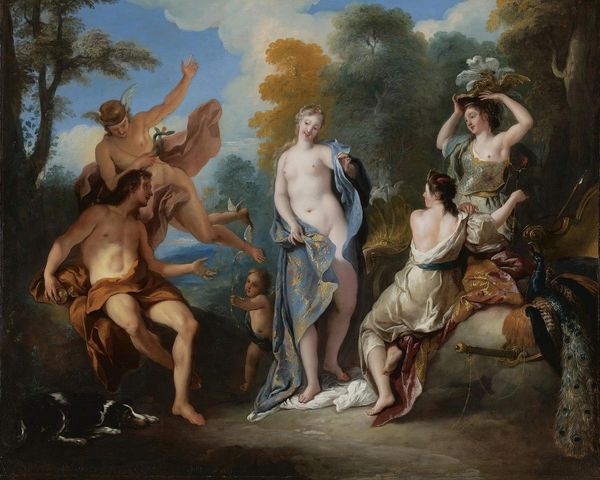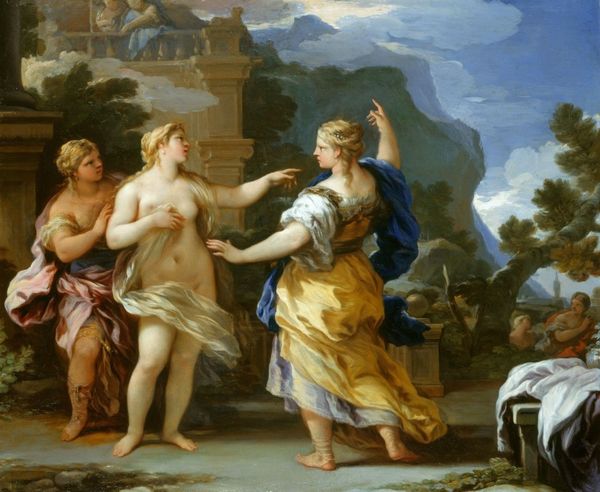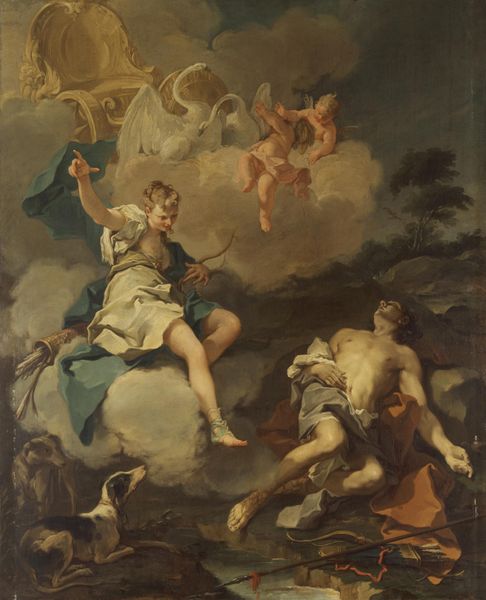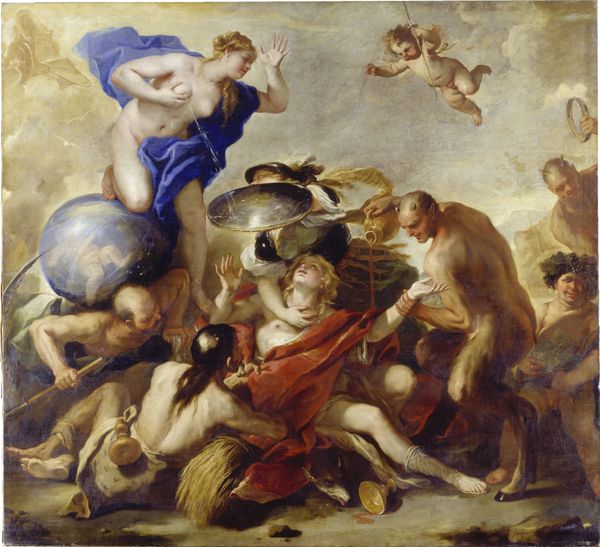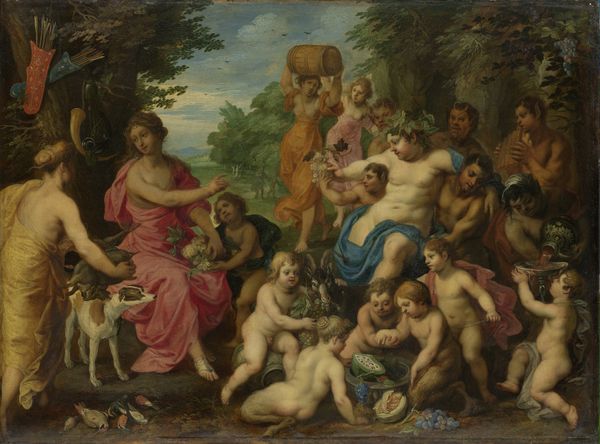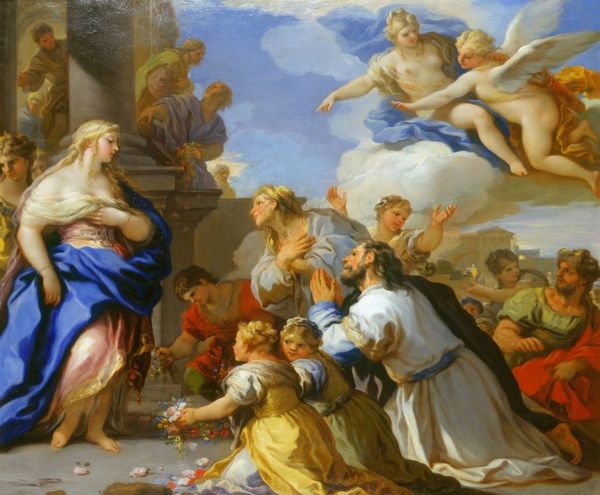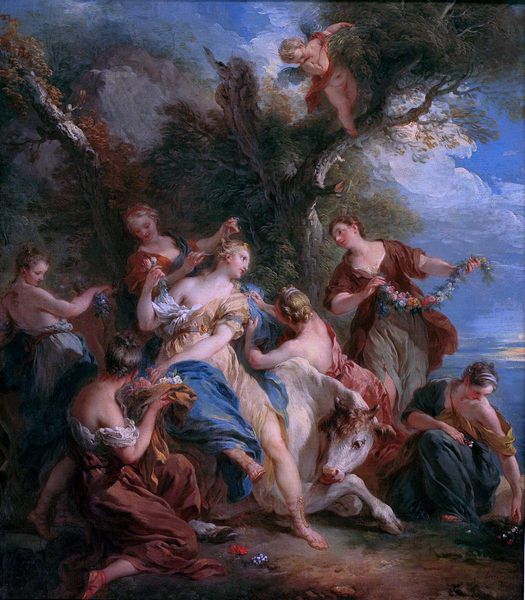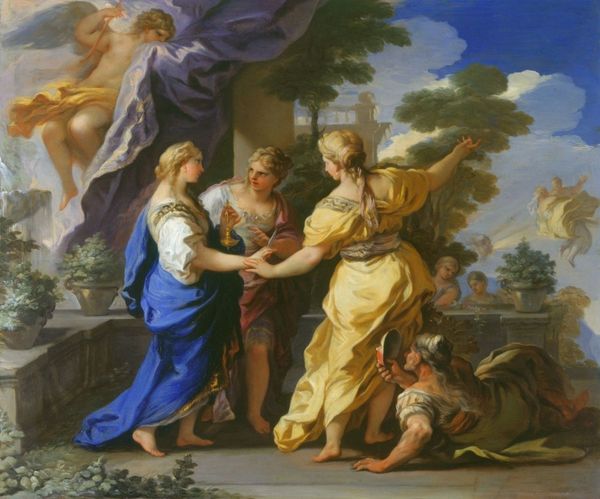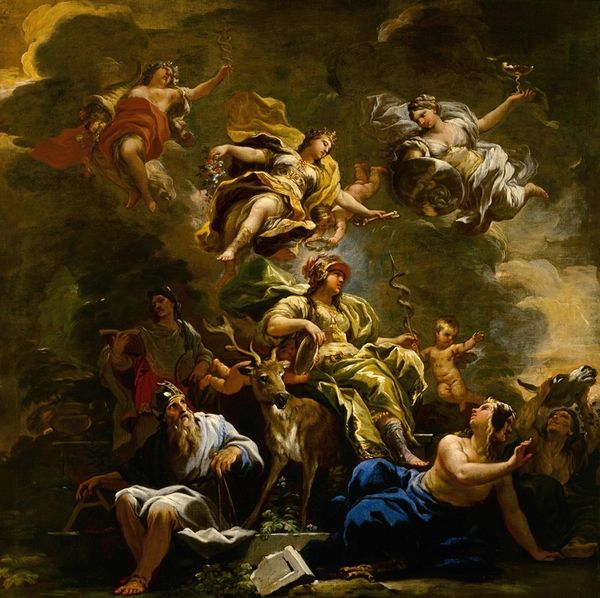
painting, oil-paint
#
portrait
#
allegory
#
baroque
#
painting
#
oil-paint
#
landscape
#
classical-realism
#
painted
#
figuration
#
oil painting
#
mythology
#
history-painting
#
academic-art
Copyright: Public Domain: Artvee
Nicolas Poussin created this allegorical painting in the 17th century using oil on canvas. Here, Poussin employed traditional methods of layering paint to create depth and luminosity, building up color and form with meticulous brushwork. The canvas itself, likely linen, provided a stable surface for the careful application of pigments, ground from minerals and mixed with oil to create the range of hues we see. The artist would have stretched the canvas on a wooden frame, preparing it with gesso to create a smooth base for painting. The labor-intensive process of creating such a painting speaks to the patronage system of the time, where artists like Poussin relied on wealthy clients to support their work. The materials and skills required would have been costly, accessible only to those with means, reflecting the social and economic structures of the era. When considering works like this, it is important to recognize the craftsmanship involved and the social context in which it was produced, challenging any rigid separation between the fine and decorative arts.
Comments
No comments
Be the first to comment and join the conversation on the ultimate creative platform.
